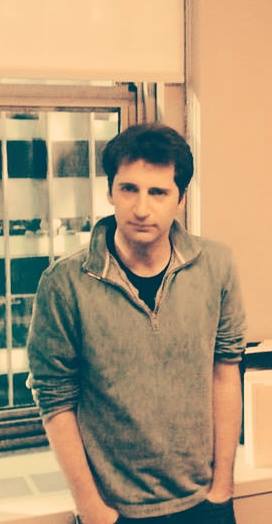FAVORITE FILMS
American Buffalo (Corrente, 1996); This film represents everything tragic about the underside of society. The performers play this 3 person act play film like it’s a jazz riff. Hoffman and Franz (as well as Nelson) KNOW the material; something we hardly see in mainstream film. Very underrated.
The Aviator (Scorsese, 2004) Scorsese’s best film. EVER. Tour-de-force and bravura filmmaking that stays true to the subject and milieu of late 1920s-1940s Hollywood. Keep watching the film and realize the faithfulness Scorsese pays to Hughes’ vision, as if it were one of the mogul’s pictures. It’s not as though Scorsese is like Howard Hughes (like some critics have stated), but one can still be memorized by his genius– and seems as though it caught Scorsese to make the picture. I wish things worked out better for Hughes, but he left us with paving the “way of the future.” Hats off to DiCaprio (as I also thought was under-appreciated in This Boys Life ; Caton-Jones, 1993), who assiduously perfects Hughes unusual behavior. I admire that Scorsese left us with as a positive, albeit complex portrayal of a 20th Century wonder. Way to go Marty.
Bonnie and Clyde (Penn, 1967) Seminal film in American history. Changed the MPAA’s rigid rules about censorship. The film’s violent conclusion reflects a moral theme that violence begets violence. Penn suggests the violence in everyday life is just as reprehensible as the crimes committed by Bonnie and Clyde. It also represents the schism between the rigid and conservative authority (nothing much has changed) with the counterculture in America.
Casablanca (Curtiz, 1943); the coolness, the timing, the chemistry, the cinematography… I could go on and on…
Don’t Look Back (Pennebaker, 1965): Bob, when he was 23& 1/2, C’mon!!! Also enjoyed Eat the Document (Dylan, 1966) as well as Renaldo and Clara (Dylan, 1977). I’m sure these two last films will soon be officially released! So I guess I should also put Masked and Anonymous (Charles, 2003), the underappreciated tongue and cheek satire made in 20 days with an all-star cast, including Dylan, Penelope Cruz, Jessica Lange, John Goodman, Jeff Bridges, Val Kilmer, etc, etc.
The Dreamers (Bertolluci, 2003) This film evokes the intensity and aura of Paris ’68 while cross-cutting to classical cinema like no other film. Certainly one of the most underrated films ever, and greatest films of all time. Bertolucci is the best of the best. Just ask Scorsese.
The Four Hundred Blows (Truffaut, 1959); all of the hipsters dig this film about child alienation. We learn a rare thing while watching Truffaut’s debut film: Empathy!
Manhattan. This film best solidifies Allen’s auteur status, due to the novelistic writing and Gordon Willis’ cinematography.*
Midnight Cowboy (Schlesinger, 1969): I remember as a kid my father pointed out the condemned house on the Lower East Side that evicts Rico Rizzo and Joe Buck. One of the few films where a performance (Hoffman’s) personified not just a character, or caricature, but also an entire entity- in this case, the subject of homelessness. It is a long time favorite.
Shadows (Cassavetes, 1959); I really dig this film. It plays like a Dizzy Gillespie LP, as it states that it is “improvised.” I based my Who is Hollywood? On Cassavetes’ masterpiece. I encourage everyone to see it. Shadows was Cassavetes’ debut film. WOW! You dig?
*Most of Woody Allen’s works need to also be addressed (1965-Present)
Allen’s best works are not just in his early films but lay in Small Time Crooks (2000) Deconstructing Harry (1997) and Sweet and Lowdown (1999). Stardust Memories (1980) is still tough to follow, but what I love about it is its ATTEMPT for greatness, by following his hero’s- in this film, Fellini’s– unique craft. I think what makes Allen great is his WISH for greatness and constant attempts for being an artist.
MOST OVERRATED FILMS
Closer (Nichols, 2004) UGH!!! I think Nichols is a fantastic director and Portman’s a good Jewish actress, yet this film takes itself too seriously, and is rather meandering in an irritating way. There’s little connection with anyone… perhaps that’s what Nichols wanted. I just don’t know.
Dances With Wolves (Costner, 1990); Costner’s directorial debut film wins an Oscar over Scorsese? Anyway, screw awards. Sometimes, directors, actors and films take themselves way too seriously; this is what I feel about Dances with Wolves.
E.T. Extra Terrestrial (Spielberg, 1982); Spielberg’s film fulfilled a dream for the director. That doesn’t mean it should be put alongside Citizen Kane and… Fantasia.
Titanic (Cameron, 1997) Perhaps it is the big-budget and phoniness in it, or maybe it’s that it trivializes a depressing story, yet many can argue about a lot of period films… yet I’d hardly consider this a “period” piece.
VERY ARTY FILMS (which means I am unsure how to rate them)
Blow-Up (Antonioni, 1966) still needs to keep watching it to then appreciate it more, or learn to hate it!
The Realm of the Senses (Oshima, 1976); Is it ART or PORN? I don’t know.
Weekend (Godard, 1967); I smoke whenever I mention Godard, Truffaut or French art in general. This one I know is great since it criticizes EVERYTHING about the Material World— What could be sweeter?
FILMS TO APPRECIATE
Apocalypse Now (Coppola, 1979); I’ve seen it more times than I care to count. Coppola sought greatness and is getting credit for it 25 years later. Courage and determination; what Chaplin also had.
Citizen Kane (Welles, 1941) This is an exciting film that uses revolutionary filmic techniques that most known directors cite as big influences, let alone the film, as a whole, being their biggest influence. I am impressed with Welles’ attention to detail in each shot (composition, transitions, deep focus et al); to represent Kane’s varying moods. So see it, keep seeing it; get the 2-Disc DVD, which is available worldwide.
The Pawnbroker (Lumet 1964) This film hits you hard over the head, but I feel a personal familial kinship to Steiger’s character. My family is from similar stock.
Trois Colours, Bleu, Blanc, Rouge (Kieslowski, 1993-1994) magnificent trilogy that evoke colors as metaphors to describe varying emotions. Each scene in each film stays faithful to the mood and ambiance (or colors) of the themes of each film. While certain moments in Bleu are somewhat slow, it is fitting since blue is a somber color and mood. Blanc is light-hearted. Rouge is passionate. The three colors summarize France’s “life, liberty and fraternity” motto in gorgeous cinematic language; That along with interesting plots make these three films together classic cinematic experiences.


